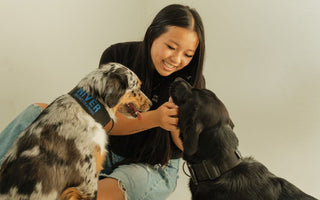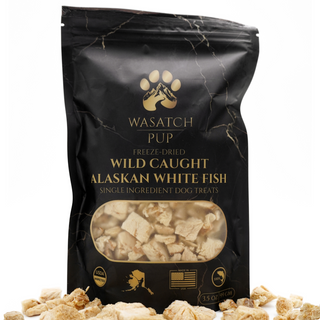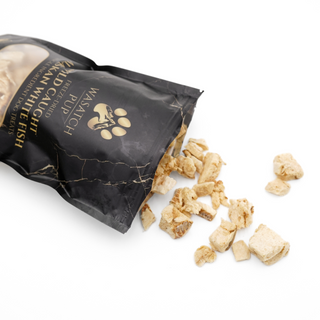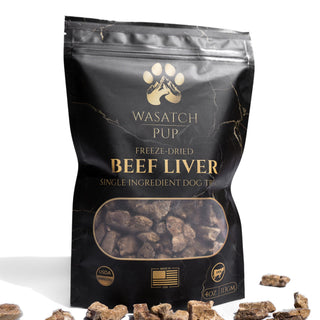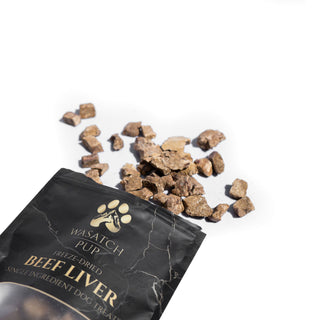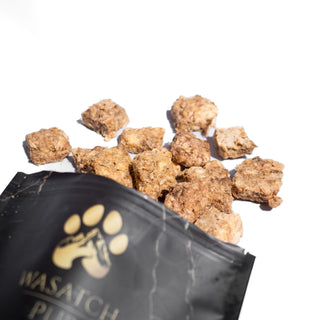Why Say “Yes”?
The verbal marker “Yes” bridges the gap between the behavior and the reward. Unlike a treat, which takes a second to deliver, the word “Yes” can be said the exact moment your dog does the right thing. This quick feedback helps your dog connect their action with the reward, making learning faster and clearer.
How It Works:
• Command: Ask your dog to “sit.”
• Mark: As soon as they sit, say “Yes!”
• Reward: Follow up with a treat, like a Wasatch Pup Treat. These high-quality, single-ingredient treats are especially motivating because of their strong scent and taste.
Why It’s Effective
Dogs thrive on consistent, positive reinforcement. Hearing “Yes” lets them know they’ve done well and that a treat is on the way, building their confidence and motivation. Using a high-value treat reinforces this message, making training sessions more engaging and rewarding.
When to Use Marking
Marking can be applied to teach almost any behavior, from basics like “sit” and “stay” to more advanced commands. It’s a clear, simple way to communicate, helping your dog learn faster and enjoy training.
By consistently marking behaviors with “Yes” and rewarding with quality treats, you’ll create a strong bond and a positive learning experience for your dog.


